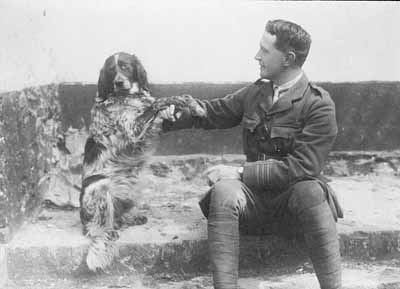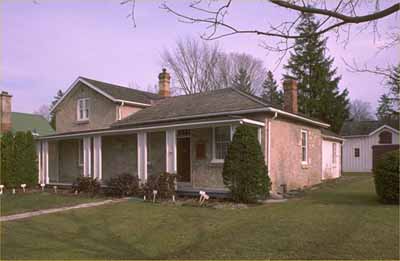Lieutenant-Colonel John McCrae National Historic Person (1872-1918)

© Library and Archives Canada/C-046284
Lieutenant-Colonel John McCrae was designated a national historic person in 1946.
Historical importance: Canadian army physician during World War I, wrote "In Flanders Fields".
Commemorative plaque: Multiple plaque locationsFootnote 1
Plaque location 1: McCrae House National Historic Site, 108 Water Street, Guelph, Ontario
Born in this house, McCrae qualified as a physician in Toronto and subsequently practised and taught medicine in the United States and Montréal. In 1914 he joined the Canadian Army Medical Corps and was posted overseas where he served until his death. Earlier, he had written the occasional verse and his experience at the front further inspired his poetic efforts. His "In Flanders Fields," published anonymously in 1915, became one of the most celebrated poems of the First World War and made the poppy a lasting symbol of the five million allied soldiers who died in that conflict.
Plaque location 2: Dressing Station, Essex Farm Ypres
English plaque inscription
While serving as a military surgeon in Belgium, John McCrae wrote In Flanders Fields, one of the most enduring poems of the First World War. Born at Guelph, Ontario, he was practicing medicine in Montreal when he volunteered, in 1914, to join the Canadian Expeditionary Force which was being sent to fight in Europe. His stirring poem, written near the trenches at Ypres’ salient, provided a strong stimulus to the Allied war effort. McCrae died in 1918 while serving at a Canadian army hospital in Boulogne-sur-Mer. His words have made the poppy a lasting symbol of self-sacrifice in war.

© Parks Canada, 1990
Flemish plaque inscription
In 1915 schreef de militaire chirurg John McCrae hier het gedicht “In Flanders Fields”, een van de beroemdste oorlogsgedichten uit de Eerste Wereldoorlog. McCrae, die geboren werd in GueJph in de provincie Ontario, werkte als arts in Montreal vooraleer zich in 1914 als vrijwilliger aan te sluiten bij het Canadese expeditieleger dat naar Europa werd gezonden. Bij zijn dood in 1918 was hij hoofdarts in het Canadese hospitaal in Boulogne-sur-Mer. Zijn ontroerend gedicht was een sterke aanmoediging voor de Geallieerden en heeft van de klaproos in de Vlaamse velden een blijvend symbool gemaakt van zelfopoffering in oorlogstijd.
German plaque inscription
Als Militärarzt in Belgien schrieb John McCrae 1915 an diesem Ort “In Flanders Fields”, eines der berühmtesten Gedichte des Ersten Weltkriegs. Der in Guelph (Ontario) geborene McCrae war Arzt in Montreal, als er sich 1914 freiwillig zum kanadischen Expeditionskorps meldete, das in den Krieg nach Europa geschickt wurde. Sein ergreifendes Gedicht gab den Allierten Truppen starken Antrieb. Als John McCrae 1918 starb, war er Chefarzt des kanadischen Militärspitals in Boulogne-sur-Mer. Durch sein Gedicht wurde die Mohnblume in Flanderns Feldern zum bleibenden Symbol der Selbstaufopferung im Krieg.

The National Program of Historical Commemoration relies on the participation of Canadians in the identification of places, events and persons of national historic significance. Any member of the public can nominate a topic for consideration by the Historic Sites and Monuments Board of Canada.
- Date modified :